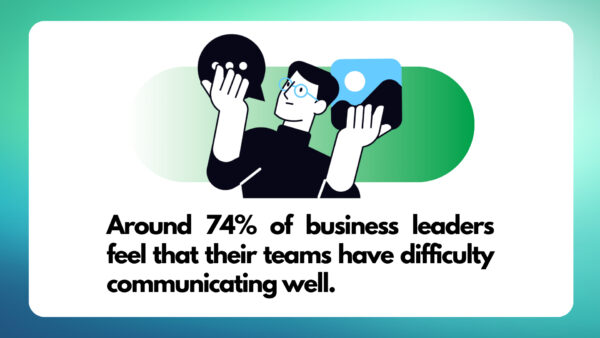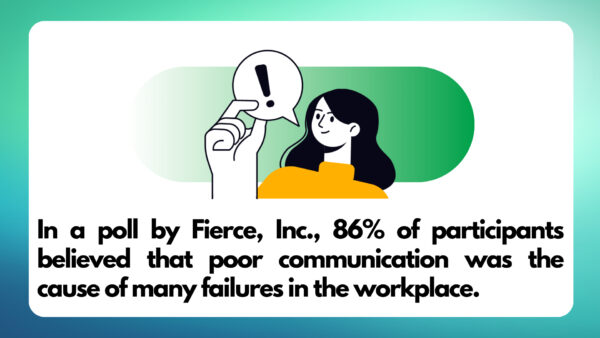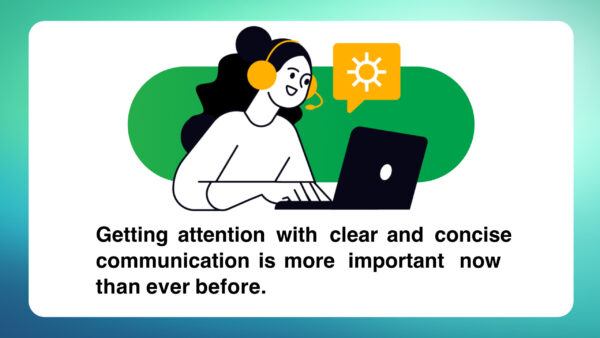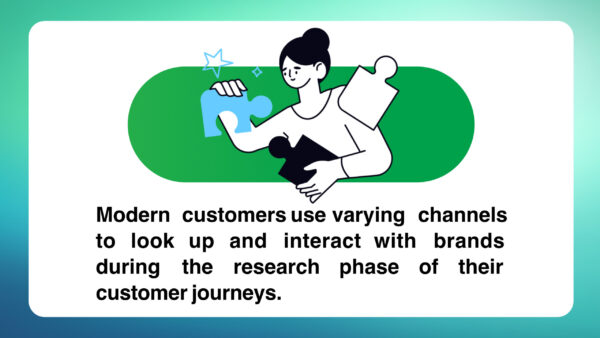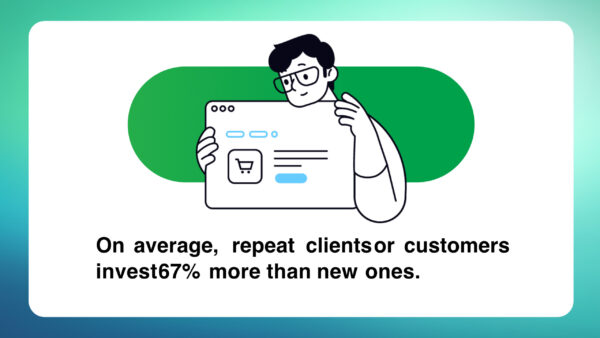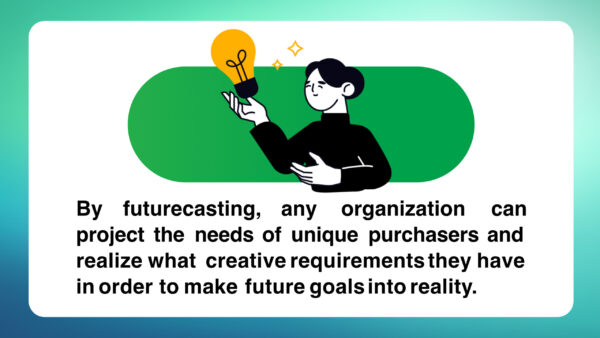Corporate Training Program

The Appleton Greene Corporate Training Program (CTP) for Communication-Powered Growth is provided by Ms. Spencer Certified Learning Provider (CLP). Program Specifications: Monthly cost USD$2,500.00; Monthly Workshops 6 hours; Monthly Support 4 hours; Program Duration 12 months; Program orders subject to ongoing availability.

Personal Profile
Ms. Spencer has been passionate about using words with purpose since she was a young girl who realized the power that written and spoken communication had in her own life.
After spending 10 years in the nonprofit world as a humanitarian worker in Hungary and Greece, and 3 more years as a book services provider, she started working with business owners exclusively. Ms. Spencer taught her clients how to tell their personal stories as a way to improve their marketing based on the knowledge she acquired in both the Comparative World Literature program at California State University of Long Beach (2005) and her Copyediting Certification from the University of California, San Diego (2020).
That’s when she realized that she could use her love of language to transition into the professional space of business development and became trained as a Certified Copywriter through the Written Results Academy (2020). Several years later, she pursued more specific business through completing Cornell University’s Women’s Entrepreneurship program (2023).
Ms. Spencer has since written over 30 books and spent time as a ghostwriter on the bench for Forbes Books, where she worked with businesses to use book writing as a strategic tool combined with custom-created offers to grow their businesses. Plus, she helped them increase both their impact and influence.
In addition to this work, Ms. Spencer is also a founding member of the consulting group She Has Infinite Potential (SHIP), which works to create better and more profitable opportunities for professional women in industries where they are underrecognized, such as business development and technology. In 2023, SHIP was recognized as having one of the most influential panels at the Women in Tech Global conference.
Ms. Spencer’s skills include: customized offer creation; expert level copywriting; creative marketing solutions; business-wide communication improvements; diversity and equity training; creative mindset coaching; conflict resolution; business storytelling; futurecasting. Ms. Spencer has over 15 years of experience as a professional writer and communicator and is a lifelong learner who helps her clients improve their revenue and productivity.
To request further information about Ms. Spencer through Appleton Greene, please Click Here.
(CLP) Programs
Appleton Greene corporate training programs are all process-driven. They are used as vehicles to implement tangible business processes within clients’ organizations, together with training, support and facilitation during the use of these processes. Corporate training programs are therefore implemented over a sustainable period of time, that is to say, between 1 year (incorporating 12 monthly workshops), and 4 years (incorporating 48 monthly workshops). Your program information guide will specify how long each program takes to complete. Each monthly workshop takes 6 hours to implement and can be undertaken either on the client’s premises, an Appleton Greene serviced office, or online via the internet. This enables clients to implement each part of their business process, before moving onto the next stage of the program and enables employees to plan their study time around their current work commitments. The result is far greater program benefit, over a more sustainable period of time and a significantly improved return on investment.
Appleton Greene uses standard and bespoke corporate training programs as vessels to transfer business process improvement knowledge into the heart of our clients’ organizations. Each individual program focuses upon the implementation of a specific business process, which enables clients to easily quantify their return on investment. There are hundreds of established Appleton Greene corporate training products now available to clients within customer services, e-business, finance, globalization, human resources, information technology, legal, management, marketing and production. It does not matter whether a client’s employees are located within one office, or an unlimited number of international offices, we can still bring them together to learn and implement specific business processes collectively. Our approach to global localization enables us to provide clients with a truly international service with that all important personal touch. Appleton Greene corporate training programs can be provided virtually or locally and they are all unique in that they individually focus upon a specific business function. All (CLP) programs are implemented over a sustainable period of time, usually between 1-4 years, incorporating 12-48 monthly workshops and professional support is consistently provided during this time by qualified learning providers and where appropriate, by Accredited Consultants.
Executive summary
Communication-Powered Growth
Introduction
If your organization struggles to use clear, concise, and understandable communication, you’re not alone. According to one 2022 study, 74% of business leaders feel that their teams have difficulty communicating well. In contrast, around 75% of the businesses in the study who had increased revenue in a specific 12-month period were more prone to say that their teams talked and messaged with each other productively.
This study also found that on average, ineffective communication costs collective businesses around $1.2 billion in total each year. This is a problem that many organizations have, but not many are finding solutions for. With this unique and comprehensive program, you will have practical, modern solutions for addressing this pressing issue.
A communication reset is vital for any business that wants to take their organization to the next level when it comes to productivity and profitability. Once the company has a strong foundation and basis for all communication and culture, that’s when the marketing department will start to see the focused benefits that clarity, concision, and confidence can bring.
It’s also time to start looking past traditional Ideal Client Avatars (ICAs) to ensure a more equitable future for both employees and clients or customers. We can begin to usher in a new era of creativity and increased revenue: all based on effective communication coupled with equity-centered opportunities.
A positive side effect of this offer is that you will also see retention in your organization go up, you will attract higher quality talent at a faster rate than your competition, and you will save tens or hundreds of thousands of dollars that you can reinvest in propelling your organization closer to that next milestone goal.
And by taking the time to update and prioritize your organization’s touchstone principles, you’ll have a unique opportunity to make sure that the people inside your organization care about the mission of your organization and are motivated by that mission.
As a case study, we can look at the strategies that Brian Armstrong, CEO of Coinbase, used to clarify the touchstone principles of that organization in an extreme move. He had a private leadership meeting and offered severance packages to anyone who didn’t feel that their personal values aligned with the clarified touchstone principles he introduced as the updated company mission. He had realized that some of the causes the company had gotten behind were actually distracting from the main touchstones he wanted Coinbase to pursue, and acted accordingly.
Once everyone who decided to stay was aligned with the with the new goals, as a company they were able to make progress faster and retain new hires longer because everyone knew exactly what the mission of the organization was. This had far-reaching results for Coinbase, even though initially Armstrong faced a lot of criticism for this choice.
When we work to improve the foundation of your business by refining your goals, offers, and touchpoint principles, your organization will experience the same elevated clarity, increased progress, improved retention, and propelled growth.
Areas of Intentional Focus
This program features 12 key points of training that are split into two groups of learning and implementation.
The first 6 training sessions and follow-up support will focus on creating touchstone principles, communication simplification, and refined offers for unique purchasers across all departments.
The second 6 training sessions and follow-up support will focus solely on the marketing department and using all of the refined information from the first 6 sessions to develop new systems that will target unique purchasers who are excited to receive help based on your organizations touchstone principles while training your team how to anticipate what follow-up offers to create based on the successes that result from these 6 sessions.
This holistic approach to embracing focused, high-value work is a system your team can use at each new stage of organization growth to scale and pivot according as you scale into the future.
The first 6 areas of intentional focus for all related departments are:
Communication Reset—Initial Steps
Do you wish you could reduce friction within your company and in all of your purchaser-forward communication while increasing productivity and revenue? Then you need a total communication reset. To build organization-specific touchstone principles, or refine the ones you already have in place it is important to simplify and adjust company-wide communications while improving the way team members relate to each other and work together across all levels.
This is essential because:
According to 43% of leaders in businesses, ineffective communication reduces the abilities of their teams to be productive.
Poor communication also has a negative financial impact, which was observed by 38% of business leaders.
In a poll by Fierce, Inc., 86% of participants believed that poor communication was the cause of many failures in the workplace.
Ineffective communication at work can result in lost sales, low morale, missed performance targets, and failed projects.
Curiosity Based Discovery—Moving Past Ideal Client Avatars
Have you ever wondered why the amazing ideas your team members have don’t always translate into increased profit and overjoyed clients and customers? There is a key component that a lot of organizations miss: curiosity. And being curious won’t just help your organization make more sales: it will also increase the productive nature of your teams, the retention rates across all departments, and the competitive edge you need when it comes to attracting new talent.
The best way to grow relationships and sales is by avoiding the limitations that traditional ideal client avatars create. The truth is, these avatar demographics were created to make life easier on marketing agencies, not benefit each company that is looking to expand their impact and influence.
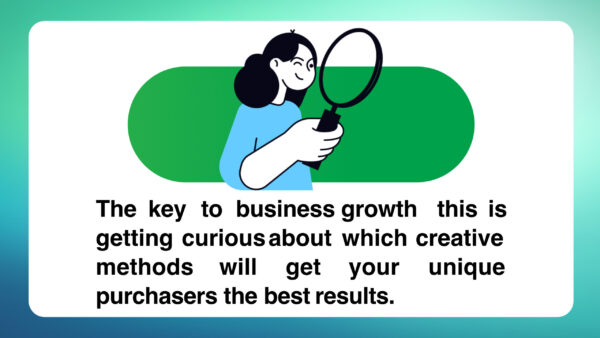
And the key to doing this is getting curious about which creative methods will get your unique purchasers the best results. In this training and follow-up support, you’ll learn how to target multiple unique purchasers who embody specific characteristics and desires that match your organization’s new touchstone principles by going through 5 levels of curiosity.
This is essential because:
According to a study published by Harvard Business Review, curiosity fosters more honest communication and improves teamwork.
Each individual becomes more adaptable and receptive to options that you may have previously discounted when you are curious. This is particularly beneficial for your organization’s search for innovative and surprising solutions.
Discover Your Organization’s High-Value Skills
When you look at the lifetime value of each unique purchaser, have you ever wondered how you can increase that number? To discover how to do that, you can use your touchstone principles to learn which of your skills is high-value, and focus more on that. Using the Pareto principle, this training and follow-up support will help you learn to let go of the services and products that no longer serve you so that you can focus more intensely on those that do.
This is essential because:
Pareto analysis aids in problem identification and task completion prioritization. It can also enhance productivity, profitability, and a host of other factors. In the end, it maximizes the performance of the entire organization by arranging which operations will yield the most profitable results.
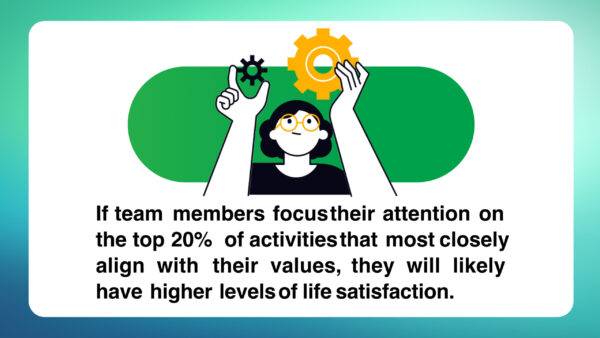
This macro idea can also benefit the micro aspects in your company. For instance, if team members focus their attention on the top 20% of activities that most closely align with their values, they will likely have higher levels of life satisfaction. By encouraging employees to make more boundary-focused decisions, your company should be able to lower burnout.
Unlock the Hidden Power of Diversity in Your Organization
Every organization is looking to exponentially increase profitability within their company. But what if there was a dynamic force already hidden inside your organization, and all you had to do to access these benefits was to nurture this force? With this training and follow-up support, you’ll learn how to use members already in your company to build better offers and customer and client experiences without burning out your team.
When you learn exactly how to value underrecognized women and men on your team, you’ll be adding unique purchasers that your competitors are not thinking about. Plus, you’ll be able to use their creative thoughts to foster better productivity while increasing your organization’s retention and building a reputation that younger generations will notice and want to buy in on.
By using your company’s refined touchstone principles, we can better use the diverse and creative members of your team to find out what issues they see that need to be addressed. That way we can work on these problems in order to make sure that by the time we get to the marketing steps of this process, we have a good understanding of where there have been gaps in consumer representation within the organization’s offerings.
This is essential because:
Globally, women control over $31.8 trillion when it comes to spending worldwide. In the United States alone, that equates to women controlling or influencing 85% of spending that is consumer based. In many organizations, both the leadership and marketing teams are influenced mainly by men, meaning that a lot of these funds are being left on the table due to a lack of inclusivity and creative thinking. In fact, in one study, 91% of women stated that they don’t feel that advertisers understand them.
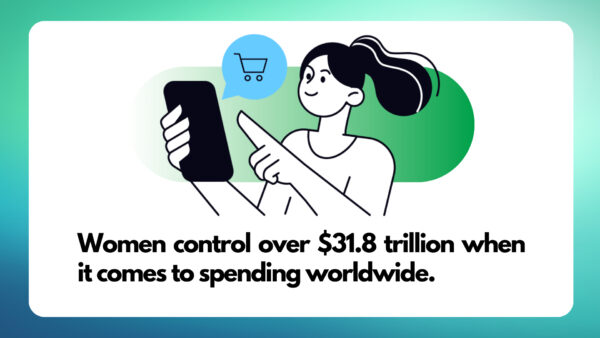
Even in the business to business space (B2B), we see that there is a bigger need to think about women and underrecognized groups because 1 in 11 businesses in the United States are now owned by women.
According to the Minority Business Development Agency, there are 9.7 million firms that are owned in the United States, with 1.04 million having paid employees. As this number continues to increase, it is more important now than ever for organizations to be more inclusive when thinking about how to address the needs of diverse unique purchasers.
Simplified Communication, Offer Adjustments, and Curiosity Mindset Methods
Have you ever wondered why some organizations have excited team members in every pitch, why your people seem stressed and worried? The difference has everything to do with simple communication and expertly calibrated offers.
With all of the input we’ve received from your team, it’s time to create a simplified communication breakdown that everyone in your organization has access to. The first step is to create a guide that states and explains your company touchstone principles in simple language so that everyone knows how their individual values line up with the values of your organization. Next, it’s time to think about the offers you have through the refined filter of these touchstone principles.
Gathering the information you need is only one important step. Next, it’s time to take all of the data we’ve gathered and work as a team to refine existing offers that fit the company’s new touchstone principles, remove offers that don’t, and create new offers to test that fill in whatever gaps exist. Once we’ve agreed on what these updated offers look like, we will create the rest of your communication breakdown with preliminary language about each offer that your team can use during the development and testing process.
Throughout this process, your team members will have learned how to be more open and curious about potential solutions for the different problems they encounter. To cement these productive and creative methods into your company culture, we will also use a repeatable mindset exercise that your organization can implement to make sure that this company culture shift stays active.
This is essential because:
Research indicates that employees who feel their opinions are valued are nearly five times more likely to produce their best work; yet, only 64% of companies prioritize telling their staff about their strategy, principles, and purpose.
In the modern world, a lot of businesses still struggle to incorporate the information they have into their business plans. Experts concur that data is valuable, but few firms understand how to use it, and many are reluctant to use it to change their culture because they perceive it to be challenging and time-consuming.
Building a collective mindset that thrives on curiosity is vital because when employers promote a culture that supports learning and progress, staff members are more eager to take on new responsibilities. Compared to their peers, employees who participated in their own learning stated that they felt 23% more equipped to tackle new responsibilities. This makes it possible for companies to expand into emerging sectors and advance staff members internally. The effective acquisition of new abilities by employees boosts their confidence, and they can additionally pass on what they’ve learned to others, which adds to their job satisfaction.
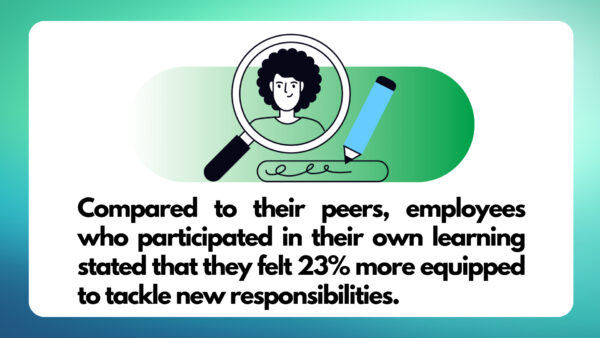
Summary for focused learning points 1 through 6:
Now that the lines of communication have been reset, we can focus on marketing without having to worry about technical terms creeping into language intended for clients. Now, it is time to get the marketing team to sell more of the high-value, streamlined services you provide.
The second 6 areas of intentional focus for the marketing department are:
Grab Their Attention
It can be simple to get sucked into the cacophony rather than rise above it in a world where there are countless demands for people’s attention. We will examine the strategies your business has used to garner attention and adapt them to your new touchstone principles throughout this training and follow-up support. Additionally, we will design fresh strategies for capturing and retaining the interest of your unique purchasers. Based on the future transformation we anticipate for your business, we will then work through a means of testing these updated techniques.
This is essential because:
Updated studies show that the human attention span has decreased by 4.25 seconds since 2000, meaning that it is currently measured around 8.25 seconds, which is shorter than that of a goldfish (who can hang on for a full 9 seconds). This means that getting attention with clear and concise communication is more important now than ever before.
Glue Through Connection
Do you want unique purchasers that fit your organization’s touchstone principles to keep you top of mind? Without identifying the emotions they go through, you won’t be able to introduce your offers to them through the lens of a trust-based relationship. This training and follow-up support is all about creating clear points of human connection that the people your company is speaking to won’t soon forget.
This is essential because:
According to Psychology Today, the biggest factor that influences a consumer’s preference for a name-brand product is the emotions they feel in connection with that brand. How do we know this? Store brands and generic versions usually have the same ingredients, but the generic ones cost less money. Why would anyone choose to spend extra money, then, on the name-brand goods?
Brands with widespread advertising have clout in their markets specifically because of the emotional bond they have created with the customer. A consumer’s likelihood of being a devoted user increases with depth of their emotional attachment to that brand.

Give Them the Information They Need—Unique Purchasers Want to Control Their Own Customer Journeys
Have you ever felt like your unique purchasers didn’t follow one straight path along a customer journey? You’re right. The way that unique purchasers interact with businesses has transformed dramatically over the last 10 years.
In this training and follow-up support, your team will learn how to optimize or create a clear client-driven journey compiled of easy-to-digest content that allows your unique purchasers to get the information they need to help them decide whether to purchase on their own. It’s time to help them understand—without having to get on a call with someone from your team—why your company is the clear choice for their trust and investment.
This is essential because:
Modern customers use varying channels to look up and interact with brands during the research phase of their customer journeys. This creates complex movements throughout that journey that are not usually linear.
Plus, different generations tend to engage with different phases of customer journeys in various orders, which means you have to take those generation-specific demands into consideration.
If you don’t know what types of information your unique purchasers want, or display that information in mediums they are familiar with, they aren’t likely to go on any sort of customer journey with your organization.
Get the Results for Your Unique Purchaser
Does your product or service actually do what you say it can for the people who need it to work most? And is the journey from purchasing to getting those results as smooth as it could be?
In this training you will learn how to test your deliverables and delivery method so that you can build a smooth purchasing and follow-up path for your unique purchasers. The way you execute the methods in this workshop will help you transform ordinary clients into fans and referral partners.
This is essential because:
While you may have improved the quality of your product or service, and delivery as well as you ever have, those aren’t the only factors that unique purchasers will take into account. No matter who you are, people will compare your products, services, and delivery methods to those of other organizations who sell things similar to you.
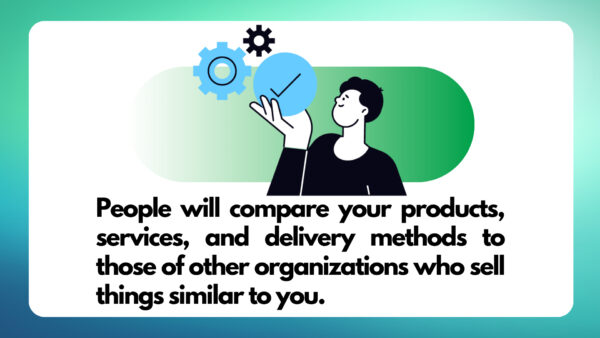
It is vital for you to make sure that you not only exceed industry standards, but think about what the future of your industry will do to perform at the highest levels when it comes to quality and deliverability.
The follow-up matters more now than ever, because unique purchasers are talking to people who use your competition to see what their experiences were like and vice versa. In this instance, your follow-up could present a unique opportunity for your purchasers to tell their friends and colleagues what an amazing experience they had with your organization.
Grow Beyond Where You Are Now
Now that we’ve worked to solve the initial problem of the unique purchaser with simplified and specific offers, it’s time to think about the next problem they will face since that initial problem has been solved, and come up with a solution. This training and follow-up support will help your organization understand how to repeat the steps you’ve all learned as you approach creating a follow-up offer that works with your touchstone principles so that you can continue to grow and scale long term.
This is essential because:
It is much more financially viable for you to help clients succeed and then help them with follow-up offers that ascend in cost and value than it is to constantly go out and find new clients.
On average, repeat clients or customers invest 67% more than new ones. Plus, it usually costs about 5 times more to acquire a new customer than to keep one you already have.
And, just by improving the client or customer retention rate you have now by a mere 5%, you are likely to increase your organization’s profits by around 75%.
As we learned in an earlier training, Pareto’s principle comes into play again: The facts are that 80% of your organization’s profits in the future will come from 20% of the customers or clients you have right now.
The Testing Grounds—Measuring Repeatable Work
Based on all of the work you’ve done in the program so far, it’s time to evaluate your results and learn how to make adjustments based on them. Plus, in this training and follow-up support, your team will learn how to benefit from creative input during this analysis step by doing deep mindset work. And all while you learn how to futurecast long-term growth that your organization can continually use to scale as you develop more refined offers and hone in on the characteristics of your favorite unique purchasers to work with for your more customized and high-value offers.
This is essential because:
Data collected from the focused efforts of this program will help your organization optimize and visualize the results of the work you’ve done so far, and give you strong hints about what could be adjusted to find more refined success with your goals. Having information isn’t enough. You must learn how to look at the data you have to evaluate and measure the way the company is performing.
Having a default organization mindset that leans toward creativity will allow your team to be more strategic instead of just putting in more hours. This can boost output and prevent your team from feeling stuck. While structure and routine are important, growth shouldn’t be sacrificed in the name of maintaining present systems and support. Any organization can benefit from higher productivity when it encourages creativity and innovation.
By futurecasting, any organization can project the needs of unique purchasers and realize what creative requirements they have in order to make future goals into reality. That way, when you find your organization in the future, you will already have many of the tools and strategies you need to succeed in the goals you had set in the past.
Imagine the Possibilities
When you have an informed, outside opinion about your company culture, your unique purchasers, and the systems and strategies you use inside of your organization, you will finally have the information you need to make the decisions that will impact the growth and quality of everything your company does.
It’s time to hit reset on your touchstone principles, communication, and unique purchasers so that you can outlast your competition while delivering quality they can’t even imagine.
Are you ready to implement everything you’ve read about in this program in your organization? Reach out to contact us today. (Limited spots available.)
Curriculum
Communication-Powered Growth- Part 1- Year 1
- Part 1 Month 1 Communication Consistency Reset
- Part 1 Month 2 Five Dimensions of Unique Purchaser Curiosity
- Part 1 Month 3 Evaluating the High-Value Skills of the Organization
- Part 1 Month 4 Fewer Touch-Points for Greater Results
- Part 1 Month 5 Unlocking the Hidden Power of Diversity in Your Organization
- Part 1 Month 6 Offer Adjustments & Simplified Communication
- Part 1 Month 7 Grab Their Attention
- Part 1 Month 8 Glue Through Connection
- Part 1 Month 9 Give Them the Information They Need
- Part 1 Month 10 Get the Results They’re Looking For
- Part 1 Month 11 Grow Beyond
- Part 1 Month 12 The Testing Grounds
Program Objectives
The following list represents the Key Program Objectives (KPO) for the Appleton Greene Communication-Powered Growth corporate training program.
Communication-Powered Growth – Part 1- Year 1
- Part 1 Month 1 Communication Consistency Reset —When your organization goes through the process of changing the language in your marketing, your organization needs to be able to maintain consistency, and the best way to do that is to do a multi-departmental reset. During this process, we educate all team members in attendance on how to listen and communicate based on the powerful principles we plan to use as a vehicle to propel future growth. There will also be mindset work to help everyone combat their own scarcity mindset as we visit potential changes for the organization moving forward.
- Part 1 Month 2 Five Dimensions of Unique Purchaser Curiosity —In this workshop, we’ll discuss what these unique purchasers think will help them, and how to target them through that to gain permission to talk to them about what will actually help them see real results. No organization can target everyone, but your organization can target multiple unique purchasers who embody specific characteristics and desires that match your organization’s touchstone principles.
- Part 1 Month 3 Evaluating the High-Value Skills of the Organization —Now that we have updated or created your organization’s unbreakable company mission touchstones, it’s time to talk about the high-value skills your organization brings to your ideal clients. In this training, we’ll answer “What are they willing to pay top dollar for, and how can we connect what your expert skills, products, and services directly to that?”
- Part 1 Month 4 Fewer Touch-Points for Greater Results —Learn to do solely what will move the needle by using the 80/20 principle and creating or refining the unbreakable organization touchstone principles. All future goals can be informed by the answers we discovered during the unique purchaser curiosity phase and high-value skills search.
- Part 1 Month 5 Unlocking the Hidden Power of Diversity in Your Organization —In the United States alone, women control or influence 85% of consumer spending. If your organization isn’t already actively engaging women and people from diverse groups to help inform your marketing, you’re leaving money on the table. In this workshop, you’ll learn how to gain contributors from these groups who are already in your organization without causing increased burnout or decreased retention.
- Part 1 Month 6 Offer Adjustments & Simplified Communication —One of the biggest difficulties any organization has is understanding what they’re offering and putting those offers into plain language. If you can get your communication down to a 3rd grade level, you will increase your conversions. But this process isn’t intuitive to experts, so we need to retrain the collective community in your organization to think simply so that they can communicate simply. In this workshop, we will discuss your offers, what changes need to be applied based on the information that came out in the past workshops, and how you can simplify the adjusted offers you’ll share as we move forward. There will also be a focus on mindset and improving emotional intelligence through better communication with your team to improve all outreach outcomes.
- Part 1 Month 7 Grab Their Attention —With your new organization touchstone principles, refined offers, and simplified communication, the team will get to practice grabbing the attention of your unique purchasers as we build out a new lead machine with updated copy for them to test and refine.
- Part 1 Month 8 Glue Through Connection —In this workshop, you’ll identify the emotions your organization’s unique purchasers go through along with the problems that cause these emotions so we can offer your solution to them through the lens of relationship and understanding. This phase is all about creation points of human connection.
- Part 1 Month 9 Give Them the Information They Need——Now that you have the attention and connection of your organization’s unique purchasers, it’s time to create a clear client-driven journey with easy-to-digest content that allows them to get all of the information they need before they decide to purchase. A lot of organizations are still trying to control the journey their potential clients go on, but this is no longer how those making purchasing decisions want to operate. It’s time to put the information out in different formats so that people understand why you are the clear choice for their trust and financial investment.
- Part 1 Month 10 Get the Results They’re Looking For —This workshop is all about deliverables. We will go through the final steps your organization’s unique purchasers need to make a purchase and then analyze the direct follow up. The way you execute the methods in this workshop will transform mere clients into referral partners.
- Part 1 Month 11 Grow Beyond —Once we have helped your organization’s unique purchasers solve the problem your product or services address, it’s time to think about how we can also deliver on the problem they’re faced with next by creating an amazing solution that will show them that your organization can help them long-term. Learn how to increase the lifetime value (LTV) of your clients by thinking about their evolving needs.
- Part 1 Month 12 The Testing Grounds —Based on all of the work we’ve done up until this point, we’re going to look through your current results and make adjustments where needed. This workshop is all about long-term growth you can scale.
Methodology
Communication-Powered Growth
Each one of the methods in this program has been built on years of research, testing, and implementation. While many organizations know that ineffective communication is hurting both the morale and profits in their company, they don’t know how to combine proven strategies from outside of the corporate world to make the changes in communication that will transform their organization from the inside out.
In order to get clear on the goals we want to pursue as you go through this training, first we will use methods from both the copyediting world and the realm of sales psychology to refine and transform the touchstone principles of your organization. First, we will go through and train your team on the 4 Cs: clarity, concision, consistency, and correctness. All of these Cs serve the most important C of all: communication.
Once we have gone through this communication reset, we will establish your organization’s updated touchstone principles and then dive deep into the 5 levels of curiosity around your unique purchasers. The more we understand the qualities of their characters and what characteristics they value in those who serve them, the more we can dial in the sales psychology and strategic storytelling later to create real points of human connection.
Now that we have all of that information, we can use your new organization touchstone principles along with the data we’ve collected on your unique purchasers to dive deep into your offers to discover your high-value skills. Using time studies and satisfaction surveys, we will learn which of your skills brings both the highest value and best satisfaction. Using that information, we will be able to develop your new offers using reverse engineering methods that turn all of your unique purchaser’s problems into our opportunities.
Then, using proven methods that leverage curiosity and empathy to improve communication with women and members of underrecognized groups who are already in your business, we will work on realizing the creative contributions they can share with your marketing team to create a wider perspective to include unique purchasers that your competitors are completely ignoring.
Next, after we have used those methods to get extremely clear about what your organization is focused on, we will go through the 5 Gs of sales psychology with your marketing team. These Gs were developed based on strategies that have been used by titans in the business world to grow and scale business after business.
These Gs are a communication systems strategy that will help your organization grab attention, glue the unique purchasers to your organization through connection, give your unique purchasers the information they need to make a decision, get them to understand what the benefits of working with your organization are, and grow your clients to create long-term relationships.
Finally, we’ll go through a process to determine how effective your new, refined offers are serving your organization and your unique purchasers with the communication and sales psychology steps we implemented earlier to determine where adjustments need to happen. Once you have all of these systems in place, you’ll be able to use them again each time you set out to create a follow-up offer as your team scales the growth of your organization.
Industries
This service is primarily available to the following industry sectors:

Professional Services
In the Past
Historically, this category has often been seen as a catch-all for any services that businesses or organizations require, but it is one of the most vital industries for that very reason. Professional services have supported all types of businesses by working behind the scenes to create and implement systems that organizations throughout the modern age absolutely needed to transform.
Professional services have often been defined with broad terms to include any organization, division, or person whose goal was to create services instead of consumer goods. Well-known examples included legal, marketing, advertising, and accountancy services.
Since the 1930’s, professional services have steadily increased in their contributions to the gross domestic products of many countries.
In the primary part of the 21st century, professional services made up more than three-fifths of the GDP globally and contributed to the employment of more than a third of the worldwide workforce.
Without proper professional services, the working world would have ceased to function.
In the Present
Now more than ever, organizations that are interested in growing and scaling are looking less for the answer to “How?” and more for the answer to “Who?” The response to the second question is almost always someone who serves in the professional services sector.
Global revenue coming from the professional services industry increased to $6.382 trillion in 2023, which translated to a 6% compound annual growth rate.
Industries with the most promise in this sector fit within research, marketing, and consulting.
For many providers of professional services, they find that they work with organizations across various sectors, while some of them specialize in one distinct industry.
The two different types of professional services are embedded and independent. Embedded services mean that the services could eventually be taken over by a specifically skilled individual within the organization. Independent services mean that an individual or organization outside of the company is the one completed the specific tasks.
Though embedded teams can be helpful, it is usually more beneficial for independent teams to come in if the services needed deem to be underperforming in the organization at that time. Independent services have the distinct benefit of having an outside perspective.
Looking Toward the Future
Estimates show that the global market for these services is likely to grow to a value of over $7.77 trillion by 2025.
Many feel that the focus of this growth will take place in consulting in general, with a particular emphasis on architecture and engineering as the need for increased technology and innovation in both of those areas are in high demand.
While the numbers we have now indicate that there will be huge opportunities for growth in this sector, it is important to remember that growing competition and transforming client and customer preferences will also influence the ways in which this industry’s market expands.
Technology
In the Past
The history of the technology sector has had to do with development, production, or marketing of services that center on applying certain scientific knowledge to creating practical uses and includes machinery, equipment, and the systems that run machines and equipment.
In general, technology-based companies have been known to take on substantial risks that would not be considered wise in other sectors because of the potential reward that this individual category has shown it can bring.
Though this is considered to be one of the youngest industries, with the beginning of technology-powered economic growth beginning to shape the world in an intense way just 25 years ago, it has contributed to the growth of country GDP’s as early as the worldwide manifestations of the industrial revolution. This happened alongside of the development of standard operating procedures, mechanized approaches, and the human assembly line.
While there have been periods of growing and shrinking, which the dot-com boom was a great example of, consistent growth in both employment and wages has increased since 2010.
In the Present
Examples of organizations that sell goods and services in the technology space are creators and distributors of electronics, software, computers, artificial intelligence, and information technology (commonly referred to as IT). But these services have also had a profound impact on the way all businesses operate when it comes to payment and transport technology.
Support services for technology on their own have raised the revenue of the United States by 5.5% with an income increase in the IT sector of technology by 109% (or $600 billion) from 2010 to 2020.
In addition to the previous areas for technology-related growth, we can anticipate further economic expansion from new categories within the technology sector including but not limited to artificial intelligence, machine learning, cloud computing, and the internet of things (which describes the use of internet technology in relation to things such as monitoring homes, controlling items with devices, and advanced industrial automation).
Looking Toward the Future
Organizations outside of the sector have often looked to technology services and products to help them perform more efficiently with greater productivity and ease. This makes the technology sector one of the places people are most willing to invest, since the risk to reward ratio tends to pan out better than in other industries.
Even with the slowed growth indicated by financial forecasts, the technology industry is still projected to be one of the quickest growing economic influencers over the next five years when compared to the normal rate of GPD growth in the United States.

Transport
In the Past
In the 1700s, it was difficult to move not just people, but also goods. The world was largely connected by mud paths, and sea travel was expensive and risky. By 1913, though, that had changed and technological improvements had paved a way for transport businesses to introduce both speed and freedom to the world that people were extremely willing to pay for.
In one example, freight rail services in the United States saw growth of 9.4% for each year from 1850 to 1910.
With the large and involved investments that infrastructure took, many governments stepped in to help build networks that private companies could use to create frameworks for what would become the booming transport industry.
As technology improved and infrastructures evolved from 1930 to 1990, people became accustomed to being able to ship materials by truck, train, or airplane; or personally to being able to move by personal vehicle or to travel by rail or air.
In the Present
The GDP from transport in the United States alone has increased from $557.30 billion in the fourth quarter of 2022 to $561.90 billion in the first quarter of 2023.
And considering that more than half of the expenses having to do with transportation—around 70%—are for business to business goods or services, and the GDP doesn’t take business-to-business transactions into account, we are missing the big picture of exactly how active the transport industry is when we look at indicators of economic growth.
Looking Toward the Future
As we look toward the future of the transport industry, we see that it is going through massive changes as the transformation of preferred energy coupled with new technology moves consumer and business demands toward electrification, servitization (mobility as a service), and automation.
Though we see many advances in technology, the traditional methods of transportation are unlikely to be supplemented altogether, meaning there will also be room for growth related to the income this industry creates.
Some projections place the compound annual growth rate of transpiration services as high as 8.3 between 2022 and 2032.

Consumer Goods
In the Past
When dealing with products that are bought and sold, the sector of consumer goods encompasses many of the businesses that are present in any global economy.
Before World War 1, people still consumed what they considered to be necessary to life—a home, a meal made of food, a shirt and a skirt or a pair of slacks. But people weren’t thought of specifically as consumers until World War II and the industrialization that resulted.
In the United States, with more people being located in large cities without increased technology in transport, city dwellers were looking for safe food that could be stored longer since much of the fresh food was arriving at metropolis markets already rotting.
As new companies and products popped up exponentially over the next few decades, the global experience of becoming a consumer grew along with the involved profits that could be made.
In the Present
Specific product categories are considered essential, like food, whereas other categories like cars can often be seen as luxury products. Items that are in higher demand ten to have higher values to their consumers. For example, products such as cleaning supplies and toilet paper will always be in high demand because of the value consumers hold for them in everyday life.
With the top 10 of the highest grossing 100 consumer goods companies in the United States making between $92.32 and $43.00 billion in 2022, the state of the market still seems healthy—even with the increased levels of inflation seen in 2022 and 2023.
The increase of available technology has shifted various markets as production and availability transform while consumer tastes and preferences also drive or reduce demand for products over time.
Looking Toward the Future
Even though the growth of the middle class has slowed in many regions, it is believed that it will grow by 1 billion people in the Asia-Pacific region by 2030, creating a huge spike in demand for consumer goods.
Organizations who can successfully navigate the economic waters to capture some of these potential customers will need to produce items that are associated with value. If companies can focus on being more efficient to lower their expenses in order to pass on those savings to their customers, they will be in a much better position to gain trust from emerging markets.

Education
In the Past
Education started as a cultural service to society to create future opportunities for the improvement of their youth. While some religions established standard learning for their young members, societies also largely embraced apprenticeships as technology increased and trades came into existence.
Education did not shift into a different model until the 20th century, when consumerism, driven by growth, encouraged a different approach. Large establishments that were able to pool enormous resources to provide their students with a higher quality education began to replace the individual resources of each owner of knowledge and the commodities that went along with that smaller pool of information.
After World War II, the idea of knowledge as a product became popular and accepted by wider society in different parts of the world.
In the Present
In the current world of education, there are generally four accepted sectors that are determined by scope of service. This specific industry includes all things learning, whether you’re going through the process of understanding the basics like reading, writing, and math or you’re interested in more vocational training like truck driving or plumbing.
While the number of services sold varies depending on the country due to the lack of universal provisions of government-funded higher education, the global numbers we’re going to look at still represent accurate growth over time.
In the education sector, total revenue worldwide reached $6.89 billion in 2023 with an increase of 9.1% from the previous year.
Looking Toward the Future
It is important to have a good understanding of the education sector if your organization plans to interact with students of any type. At the same time, there has also been an increase in adults who are interested in this industry as they learn and grow to become equipped for new careers or leadership positions.
The projections for the annual growth rate between 2023 and 2027 is expected to increase by 11.66% over that 4-year period.
Education is one of the most fundamental industries in our society and also one of the largest drivers of innovation.
Locations
This service is primarily available within the following locations:

Pittsburgh, Pennsylvania
Known as the “Steel City” for its contributions to the steel industry in the Gilded Age, what was once an industrial powerhouse and home to likes of George Westinghouse and Andrew Carnegie, Pittsburgh, Pennsylvania has adjusted to serve as the home for emerging technologies in the modern age.
Key industries in the city now center around life science and healthcare, energy, cybersecurity, robotics and artificial intelligence, manufacturing and distribution, and even climate tech that includes decarbonization.
Many businesses now call Pittsburgh home, with branches of organizations from:
• Amazon
• Bosch
• BNY Mellon
• Apple
• Duolingo
• Google
• Dick’s Sporting Goods
• Philips
• Meta
• GE Renewable Energy
And local businesses were also founded and include:
• Giant Eagle
• UPMC (The University of Pittsburgh Medical Center)
• PNC Financial Services, Alcoa
• PPG Industries, Westinghouse
• and, probably most famously, Kraft Heinz
As a city that possesses an international airport, an inland port, along with international markets and plentiful natural resources, Pittsburgh sits as a city of abundance and historical influence just west of its big-city counterparts, Philadelphia and New York City, while remaining close to other influential cities in the business realm like Nashville, Cleveland, Detroit, and Indianapolis.
It is also located away from many types of natural disasters so that supply chains can keep operating year-round.

New York City, New York
Famous for housing the epic and influential Wall Street, New York City has long been considered one of the world’s most important financial centers. Though the original center of trade was located in Philadelphia, Pennsylvania, New York City emerged as a global financial hub in 1825.
One of the main benefits of doing business in New York City has to do with its geographical location. In history, the city started as an essential location for European traders and travelers, and served as the first port of entrance for many immigrants, who then found it convenient to settle in, as traveling to other cities required a lot of additional resources. This influx of immigration also contributed to the increase of commerce in the city.
With such an influential financial history, it makes sense that one of the dominant sectors in New York City has to do with banking. But there are also other sectors represented through the historic gem of the United States’ East Coast.
Organizations that have offices or headquarters in New York City include:
• NBCUniversal
• Etsy
• Carta
• Bank of America
• Peloton
• DoorDash
• HelloFresh
• WeightWatchers
• Snap Inc.
• Squarespace
• Capital One
• Nike
• Realtor.com
• Grubhub
• Spectrum
• Airbnb
The most prevalent sectors represented in New York City include financial services, mass media, fashion, healthcare, professional and business services, entertainment, real estate, and food services.
With its rich historical background, diverse population, and epic business influence, New York City is a place where any organization can feel at home and find endless opportunities.
Columbus, Ohio
With origins as one of the most influential brewing cities in the country, Columbus, Ohio has a rich history of European business influences. They also had amazing starts in the manufacturing world with everything from iron buggys, dairy, pharmaceutical products and prosthetic limbs, to shoes.
Modern-day Columbus includes organizations in the education, fashion, defense, food, logistics, medical research, technology, banking, fashion, retail, and energy sectors.
Companies that have either offices or headquarters in Columbus, Ohio include:
• Nationwide
• L Brands
• Kroger
• American Electric Power
• DSW, Inc.
• Amazon
• NetJets
• IBM
• Big Lots
• Safelite
• Express
• FedEx
• JPMorgan Chase & Co
As a city with a population that gives it a rank of 14th in terms of population, Columbus is also a central location, with 48% of all United States residents living within 600 miles. It is also home to The Greater Columbus Convention Center, located downtown, which takes up around 1.8 million square feet. Plus, it is home to Ohio State University, which is the third-biggest university in the entire country.
Columbus, Ohio has a lot of the diversity and historical influences that other big cities have, but a more smalltown feel, in spite of its large population.

District of Columbia
In the last 10 years, Washington, DC has become a significant, global marketplace that has opportunities for so much more than just American politics. As a city with both history and legacy on its side, it is also a central location that brings commuters in from cities and states all around it.
Washington, DC has fifteen Fortune 500 companies that call it home, including:
• Hilton Worldwide
• Capitol One
• General Dynamics
• Computer Sciences Corporation
• Blackboard
• Marriot International
• Lockheed Martin
Young, education professionals in particular have shown to be significantly interested in living and working in Washington, DC because it is a lively, multicultural city with a robust and growing economy that makes it a desirable location for both singles and families.
Its main sectors include federal government organizations and federal contractors, professional and business services, hospitality and tourism, technology and innovation, real estate, higher education, healthcare, and retail.
As a city entrenched in deep history with meaning on almost every corner, the modern development and business growth makes it an ideal location for many professionals and businesses as the city itself innovates into the kind of place people love to live and work.

Boston, Massachusetts
With a rich history in the consumer goods sector, Boston was well-known for its clothing, textiles, leather goods, and shoes. In the last two decades, it has shifted largely from manufacturing jobs to those involving technology and the service industries.
The city is a huge proponent of business development and offers a wide range of services to make it easier for businesses to get started there. Finance, high-tech research and development, travel, education, commercial fishing, printing and publishing, food processing, and healthcare are all major sectors in Boston.
Some of the major organizations with locations there include:
• Wayfair
• Gillette
• General Electric
• Fidelity Investments
• CarGurus
• Oracle
• Liberty Mutual Insurance
• Deloitte
• Amazon
• IBM
Boston is also known for being a wonderful city for startups because of its unmatched pool of talent, renowned platform firms, and the way it gives back in both culture and support. And as the place of origin for modern risk capital infrastructures, recent growth in the number of funds popping up in Boston make it a great place for businesses to put down roots.
Program Benefits
Management
- Solution Inquiry
- Inclusivity
- Clarity
- Confidence
- Interior Resources
- Mission
- Org Reset
- Resilience
- Futurecasting
- Mindset
Marketing
- Communication
- Refined Targets
- Sales Psychology
- Emotional Connect
- Rapid Progress
- Creative Focus
- Concision
- Identify Obstacles
- Psychographics
- Refined Offers
Human Resources
- Alignment
- Correctness
- Interpersonal Comm
- Recognition
- Reach
- Modern Shift
- Valued Skills
- Diversity
- Creativity
- Attention Strategy
Testimonials

Mr. Marshall (Professional Services), Founder, Listen Then Speak LLC
“Ms. Spencer helped me to see the gaps in my business while connecting to my super power in a manner that helps me best serve my clients while developing systems to scale my business to save time. Before we worked together, I was feeling exhausted, rushed, and confused. Now I feel both relieved and enlightened. Hire Ms. Spencer immediately to get clarity on your systems and processes. Any small or large business needs a business model that works and one that’s backed by buyer psychology. Ms. Spencer’s understanding of human behavior gives her industry insight that will next-level your business. Don’t delay and roll in one of her programs as soon as possible. Save yourself both time and money.”

Ms. Young (Technology), Founder, Pencil Skirt Academy
“Where do I begin? Ms. Spencer went above and beyond the scope of the work to deliver the product that would not only position my business in the right direction but set my brand up for long-term success. She took the time to conduct a thorough analysis of what my business needed to build my social media presence, and awareness on how to land/convert future clients through developing easy, attractive, and memorable content. Consider yourself blessed to work with such an expert of her caliber. I am so appreciative of the outcome I received and look forward to working with her on future projects.”

Ms. Singh (Business Services), Project Manager [Singed NDA can cannot disclose company name]
“After an intense search for a writer our group of companies hired Ms. Spencer to complete a project for us. What we noted during the interview process was an intense passion for writing with an intent to do an outstanding job. Well, this is exactly what we got and then some. Ms. Spencer does not robotically do what you tell her.
She questions the content. She makes the chaos make sense. She is a writer but she has completely owned and transformed our project thus far. It is not a paycheck for her. It is a true passion. She willingly imparts her knowledge of best practices and has provided invaluable feedback in areas we didn’t even know existed. Ms. Spencer has made this process that much easier.
It is without hesitation that I recommend her for all your business needs.”

Ms. Nichols (Professional Services), Founder, Written Results Academy
“Ms. Spencer has one of the quickest minds when it comes to executing high-level copywriting skills and strategies. She’s deeply creative and intuitive, and her writing style is clear, compelling, and convincing. As a copywriter, she gets what triggers sales and helps her clients grow. She weaves storytelling with education in a way that keeps readers intrigued. I highly recommend her services.”

Ms. Sutterfield (Consumer Goods), Founder, Sage Copacking Consulting
“Ms. Spencer has completely transformed my business. She gave my brand a voice through copywriting that actually resonated with me and in turn resonates with my audience. In just 6 months my business has grown to 3x the revenue because of her work. She understands my values and portrays that into my brand in an intuitive and powerful way.
Working with Ms. Spencer is like being with a friend who wants the absolute best for your business. I work in a unique space that was new to her, but she immediately got it.
Ms. Spencer makes my life easier and I trust her implicitly. To put it simply, she is an integral part of my business and I cannot recommend working with Ms. Spencer enough.”
More detailed achievements, references and testimonials are confidentially available to clients upon request.
Client Telephone Conference (CTC)
If you have any questions or if you would like to arrange a Client Telephone Conference (CTC) to discuss this particular Unique Consulting Service Proposition (UCSP) in more detail, please CLICK HERE.











